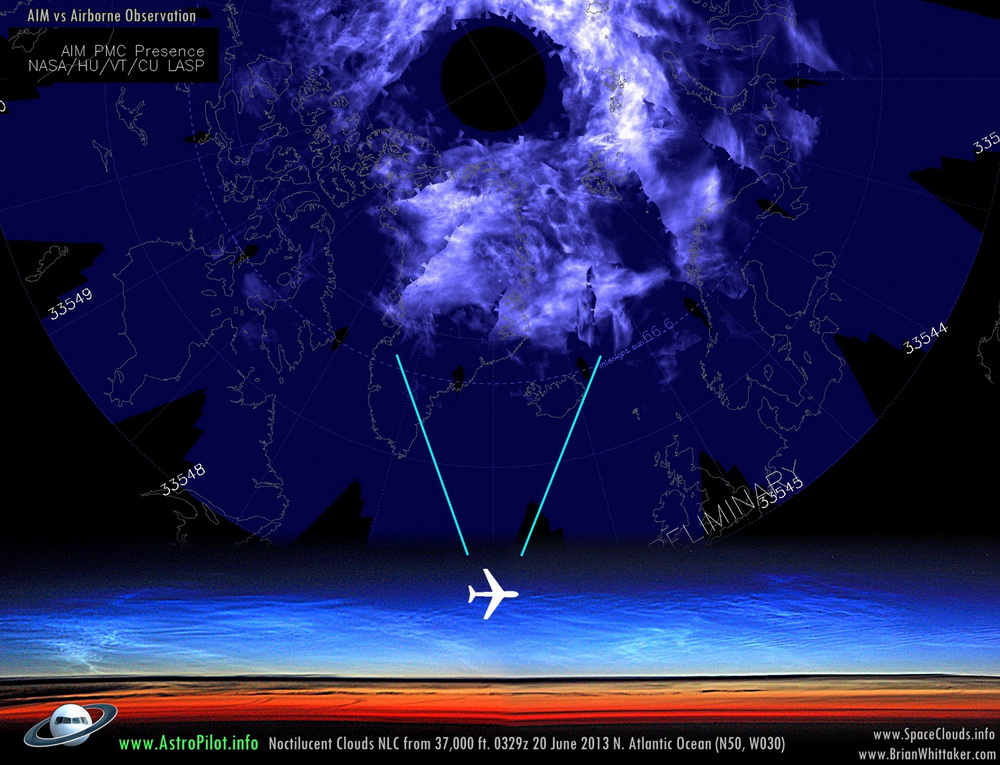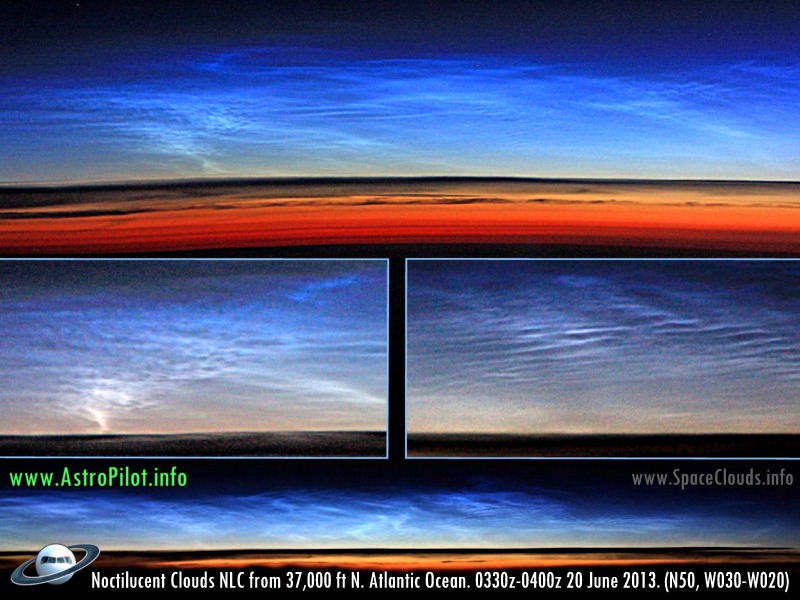"Once again, AIM's daily daisy-wheel allowed me to see where the northern horizon noctilucent clouds truly were!" says Whittaker. "This display reached a maximum height of about 10 degrees as seen from 37,000 feet at 50N latitude. It was my 4th and best sighting of 2013 so far."
2013 is shaping up to be a good year for NLCs. The clouds surprised researchers by appearing early this year, and many bright displays have already been recorded. Once confined to the Arctic, NLCs have been sighted in recent years as far south as Utah, Colorado, and Nebraska. They might spread even farther south in 2013.
Comment: Shouldn't be surprising if one knows what's really going on.
What we suspect has been happening, based on our research thus far, is that the upper atmosphere is cooling because it is being loaded with comet dust, which shows up in the form of noctilucent clouds and other upper atmospheric formations.
Magnificent and mesmerizing noctilucent clouds (also called polar mesospheric clouds), were once considered to be rare. But now they are puzzling scientists with their recent dramatic changes. Apparently, the clouds are growing brighter, are seen more frequently, are visible at ever lower latitudes and are now appearing even during the day. If scientists were allowed to conduct honest interdisciplinary research, such changes wouldn't be a mystery.
They would be able to figure out that comet dust is electrically-charged which is causing the earth's rotation to slow marginally. The slowing of the rotation is reducing the magnetic field, opening earth to more dangerous cosmic radiation and stimulating more volcanism. The volcanism under the sea is heating the sea water which is heating the lower atmosphere and loading it with moisture.
The moisture hits the cooler upper atmosphere and contributes to a deadly mix that inevitably leads to an Ice Age, preceded for a short period by a rapid increase of greenhouse gases and "hot pockets" in the lower atmosphere, heavy rains, hail, snow, and floods.
As for the direct link between noctilucent clouds and comet/meteorite dust in the atmosphere, one shouldn't look further than recent appearance of such clouds above Chelyabinsk.
Observing tips: Look west 30 to 60 minutes after sunset when the sun has dipped 6o to 16o below the horizon. If you see luminous blue-white tendrils spreading across the sky, you've probably spotted a noctilucent cloud.





Thanks for the clear breakdown in the comment section. I've been trying to piece it together with not a lot of success, you've saved me a lot of time and effort.